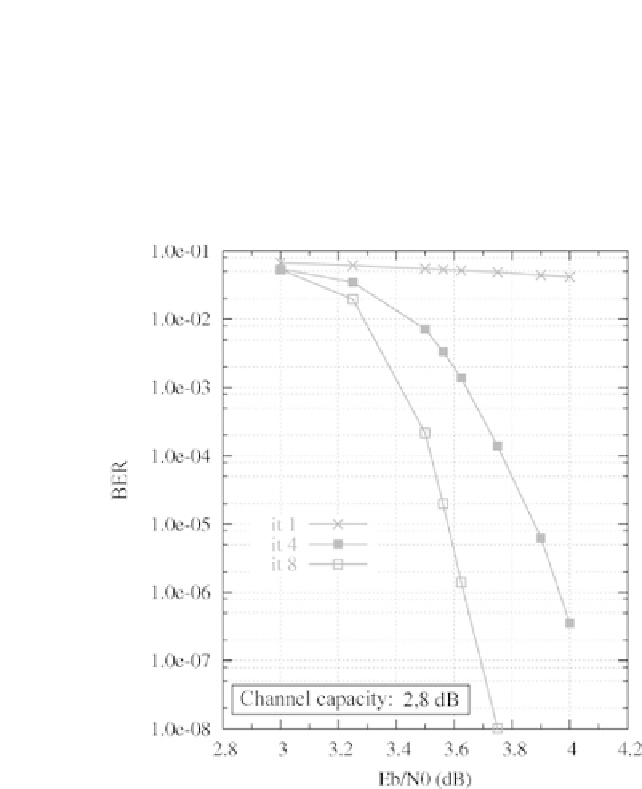Cryptography Reference
In-Depth Information
turbo code with 16 states presented in Section 7.5 for transmission conditions
similar to those leading to the curves obtained in Figures 10.3 and 10.4. We
observe that after 8 decoding iterations, the performance of the two turbo coded
modulation families are equivalent down to BERs from
10
−
4
to
10
−
5
. The better
behaviour of the pragmatic solution at lower error rates is due, on the one hand,
to the use of 16-state elementary codes and, on the other hand, to the careful
design of the turbo code interleaver.
Figure 10.12 - BER as a function of the signal to noise ratio
E
b
/N
0
of pragmatic
turbo-coded 8-PSK using a 16-state double-binary code. Transmission over a Gaussian
channel. Spectral eciency
η
=2
bit/s/Hz. Blocks of 10,000 information bits, 5,000
modulated symbols. MAP decoding algorithm. "Systematic" scheme.
The curves of Figure 10.14 show the influence of the strategy of construct-
ing symbols on the performance of turbo coded modulation. They show the
behaviour of the association of a 16-state double-binary turbo code and a 16-
QAM mapped independently on the in-phase and in-quadrature axes using the
Gray code. The two extreme strategies for building the symbols described above
were simulated. The size of the blocks, 54 bytes, and the simulated rates 1/2 and
3/4, are representative of concrete applications in the wireless technology sector
(IEEE 802.16 standard,
Wireless Metropolitan Area Network
). Figure 10.14 also
shows the theoretical limits of the transmission studied. These limits take into



